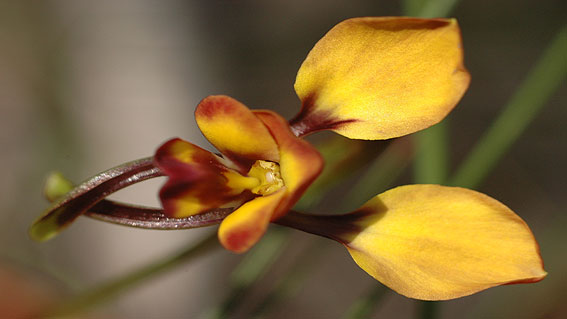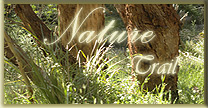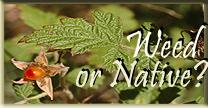 |
|||||
 |
 |
||||
 |
|||||
 |
|||||
Nature Trail...
Smiths Gully Landcare welcomes you to enjoy the walk along the Smiths Gully to St Andrews Nature Trail. The return walk from the Peter Franke Reserve car park is 3 km and takes 1 to 1.5 hours to complete. The trail follows the Smiths Gully Creek to St Andrews through the Old Caledonia Gully alluvial gold diggings of the 19th-20th century. The Peter Franke and St Andrews Market Reserves are situated on Smiths Creek in the Old Caledonia Gully. Prior to the arrival of Europeans the Wurundjeri Willam people had, for upwards of 30,000 years camped seasonally on both of these areas. Peter Franke Reserve In 1982, at the request of the Eltham Shire, 2.4 ha of Dept of Conservation Crown Land was classified Smiths Gully Picnic and Nature Reserve. It was named 'Peter Franke Reserve' in memory of the son of a Smiths Gully family. The Reserve was also the historic site of the Market Square of the gold rush days and the State Battery, gutted in the bushfires of 1962. The Weir now provides emergency water for the Panton Hill and St Andrews CFA fire brigades. The vegetation you see today is mainly re-growth from the extensive bushfire of 1962, though the original old-growth forest had already been decimated by mining and fire-wood collection for Melbourne. The Peter Franke Reserve, Queenstown Cemetery, Willis Nature Park and adjoining conservation properties tie into the wildlife corridor linking Watsons Creek and Kinglake National Park. Within this habitat there is a rich source of flora and fauna and many of these are rare and endangered species. The greatest threats today to this historically and environmentally significant region are illegal removal of trees (dead and alive), the invasion of weeds, predation by feral and domestic animals and degradation of waterways. Physical Features The gully through which the trail winds is part of the Silurian Age, Anderson Creek formation. The Anticline Syncline geology of the landscape is evident if you look up at the steep hills on the western face of the gully and in the strata of sections of rock formation in the creek-bed. The Devonian Volcanic quartz-diorite plug at The Knobs, St Andrews is the origin of the reef and alluvial gold of the Caledonia diggings. You will see blackened Eucalyptus, survivors of the 1962 bushfires and some beautiful old growth Candlebark, Manna Gums, Yellow Box and Peppermints along the trail and creek-bed. Many of these Eucalyptus date from the gold mining days and are old enough to provide suitable nesting hollows for the Parrots, Cockatoos, Kookaburras, Owls and Possums that enliven this catchment. The disturbed clay from the old gold mining sites have become habitat for wombat warrens and provide nesting tunnels for Spotted Pardalotes. Unfortunately the early diggings also favour the Fox and Rabbit. The predominant over-story Eucalyptus are: Long-leaf Box, Red Stringybark, Yellow Box, Messmate, Red Box, Narrow-leaf Peppermint and Candlebark. In the wetter gullies and the creek bed stands of Swamp Gum and Manna Gum vary the vegetation. The Acacia Species you see are: Blackwood, Black and Silver Wattles (mainly at the St Andrews end of trail) and Prickly Moses. The predominant tall shrubs are: Sweet Bursaria, Dogwood, Pomaderris, Hop Goodenia and Burgan. Of the low shrubs and ground covering plants Lomandra (Mat Rush) is predominant in the moist and shaded areas, and is of importance not only as habitat for birds, marsupials and reptiles but as competition against invasive weeds. As the woodland forest opens out at the St Andrews end of the trail, Kangaroo, Wallaby and Tussock Grasses replace the Rushes, Sedge, Maiden-hair Fern, Violets and Weeping Grass as ground cover. Wild Flowers In the Spring there is a spectacular array of Wild Flowers, the best display of these is in the open grassland at St Andrews. They include: Chocolate, Flax and Bulbine Lilies, Bush Peas, Rice flowers, Buttercups, Everlasting Daisies, Blue Pin-Cushions, Trigger Plants, Early Nancy, Milkmaids, Blue Bells, Orchids, and Sundews. Butterflies In Spring and Summer you are most likely to see the Common Imperial Blue Butterfly and at least one of the five species of Skipper Butterflies recorded in this region. Mat Rush, Sedge, Tussock Grass, Bursaria, Dogwood, Mistletoe, Burgan and Blackwood Wattle support the many species of butterflies seen along this trail. Fauna This rich habitat supports a great diversity of native animals: Black Wallaby, Eastern Grey Kangaroo, Common Wombat, Short-beaked Echidna, Brushtail and Ringtail Possum, Long-nosed Bandicoot...to name just a few. Some of the birds you are likely to see and hear, depending on the season are: Eastern Rosella, Galah, Kookaburra, Magpie, Yellow, Scarlet and Flame Robin, White-browed Scrub and Supurb Fairy Wren, Thornbill, Silver-eye, Grey Fantail, Spotted and Striated Pardalote, White-Naped Honeyeater, Golden Whistler, Olive-backed Oriel, Sulphur Crested Cockatoo, Fantailed Cuckoo, Black-faced Cuckoo-Shrike and Grey Shrike-Thrush. The Silver and Black Wattles provide sap for the nocturnal Sugar Gliders and Feather-Tail Gliders. The Bats find day-time cover and winter hibernation hide-aways under the stringy bark and hospitable hollows of Eucalyptus species. Raucous flocks of Yellow-tailed Black and Gang Gang Cockatoos disturb the tranquility as they pass through and noisy families of White-winged Choughs and Grey Currawongs are also regular visitors. A variety of water birds including Wood Ducks, White-faced Heron, Straw-necked Ibis and Sacred Kingfisher frequent the creek bed and water holes. |
|||||
 © Smiths Gully Landcare |
|||||